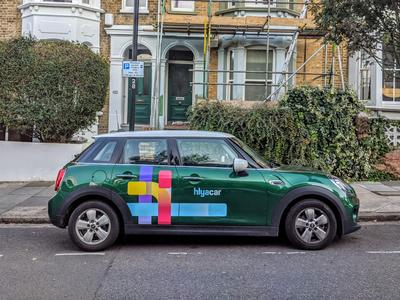
How does car sharing help the environment?
The car. A tool which most of us cannot live without completely. But, with ongoing concern surrounding climate change and the environment, and the negative effect it’s having on our beautiful world (along with the increasing threat it has on us, the human race) something has got to change.
Motor manufacturers are seen to be working on new innovations, such as a more sustainable electronically-powered mode of transport, fuelled by increasingly strict standards to adhere to from Governments across the world. That said, they’re still a long way off dramatically changing our pollution levels and the overall inevitable outcome should it continue. And so, other companies and individuals are taking it into their own hands to help towards a greener way of living, with car-sharing becoming a favoured method of getting around.
Car sharing in its overall sense is borrowing someone else’s car, but companies such as us are bringing that concept to the masses, bringing individuals and car owners together for a brighter future, saving you money and helping the environment as we go. We’ve put together a guide on the car-sharing environmental benefits and how you, too, can help the world we live in:
Fewer emissions
The most obvious benefit that car-sharing has on the environment is that there are fewer cars on the road and therefore fewer emissions being emitted. Car emissions are the largest contributor to climate change, so reducing it is key to the conservation of our environment. Fewer cars on the road means less air pollution.
Decreased oil and fuel demand
Oil and fuel are massive pollutants alone, but what about how and where they’re extracted, too. Foraging for this resource causes great harm to nature, often leading to international conflict. Not only that, these resources won’t be around forever so it might be prudent to look after what is left. Less demand for cars will mean less demand for these fuels.
Better standard of vehicle
We don’t mean in terms of comfort or specification, we mean better rated in terms of emissions. This is because more often than not vehicles available to car share will either be newer or required to meet certain regulation and standard levels. Meaning they’ll be better for the environment than a 40-year old coughing and spluttering diesel car. Within this, you’re able to choose the type of car you want, too. So if it’s that you’re going to a meeting that’s out of town but you need a car to get there, you may simply request a car that’s small and simply provides great economy with adequate levels of comfort for the drive. This could mean that larger cars aren’t on the road as often, except for when they’re truly needed (perhaps a road trip for the whole family; them and their luggage requiring a larger vehicle than say a supermini).
Less infrastructure
In the long term, infrastructure may well be affected. Parking infrastructure that is, along with less demand on the road system and related costs. If car-sharing continues on the up as it has done the last decade or two, companies will rethink the need for their parking allocation and large multi-story car parks may no longer be required. Parking won’t be obsolete, of course, and nor will the car, but it’ll certainly be effected by demand or lack thereof. Less parking infrastructure and fewer road expansions should mean more resources for park development and urban green spaces.
To make a difference yourself, take a look at the cars we have available for sharing!









